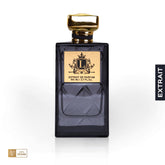What Is Vetiver? What Are Its Features?
Vetiver is one of the base notes used too intensively in the field of perfumery. The vetiver roots, which can be a perfume in itself, are profound but intense. So, what are the characteristics of a vetiver? Let's examine it together.
Botanical Features of Vetiver
Vetiver corn belongs to the same family as broom grass and sugarcane. It belongs to the family Graminae, the subfamily Panicoideae, the order Andropogoneae, and the subfamily Sorghinae. Although the botanical name vetiver has varied in history, four different genera have been used in the past with at least 11 other names.
Morphological Features
- It has an intense and massively/densely constructed root system that can reach up to 2-3 m in the first year. The thick and widespread root system binds the plant to the soil; simultaneously, this feature makes it difficult to displace the plant, and it is a drought-resistant plant.
- Hard and upright stems of the plant; (0.6-0.8 m) can stand up to deep water flow.
- New shoots from root bases and upper parts resistant to traffic and heavy grazing pressure.
- New shoots are shaped from the top. Besides, the base of the vetiver plant is always thick and active, rapid growth continues.
- The tops of beautiful, elegant flower stem with light purple flowers, then turn mauve.
Ecological Characteristics
Although the vetiver plant is resistant to exceptional soil and climatic conditions, as a C4 plant, it does not tolerate dense shaded environments. Shading reduces growth, and in exceptional cases, can cause disorders in the plant and result in failure.
Considered a pioneer plant. When the vetiver plant is heavily planted or infested with native trees and shrubs, growth decreases, and the plant dies under long shading. The vetiver plant grows best in open spaces. For this reason, the vetiver plant is a valuable pioneer plant for improvement and creation in the context of forest creation on sloping lands.
The vetiver plant has emerged as a tropical plant, and its adaptability allows it to thrive under climatic conditions outside tropical and sub-tropical regions. The vetiver plant shows promising growth in Mediterranean countries, China and Southern Europe at latitudes of 40 degrees, especially in the hot and arid climates of southern Spain, Portugal, and Italy.
Its flowers are inefficient, do not produce seeds; therefore, it is not invasive, and has no weed potential.
Use of Vetiver
Vetiver grass plant in non-agricultural applications; bioengineering, phytoremediation (cheap method in which heavy metals are removed from problem soils by using plants without destroying the environment) method of cleaning, contaminated soil, and water rehabilitation is effective in its use. In agricultural applications, soil and water protection, nutrients, and pesticide retention play an active role in the capture. It is used in landslide and landslide prevention, flood prevention, and forest fire prevention in disaster events. Vetiver oil obtained in America, France, Switzerland, England, Japan, Germany, the Netherlands, and other countries is a preferred plant for aromatherapy, perfume essences, cosmetics due to its pleasant smell. The use of vetiver oil as a source of perfumery, its use in aromatherapy, its use as roof cover, its use as bales in buildings, its use in pulp production, its use in creating bouquets contributes to the landscape and countries.

